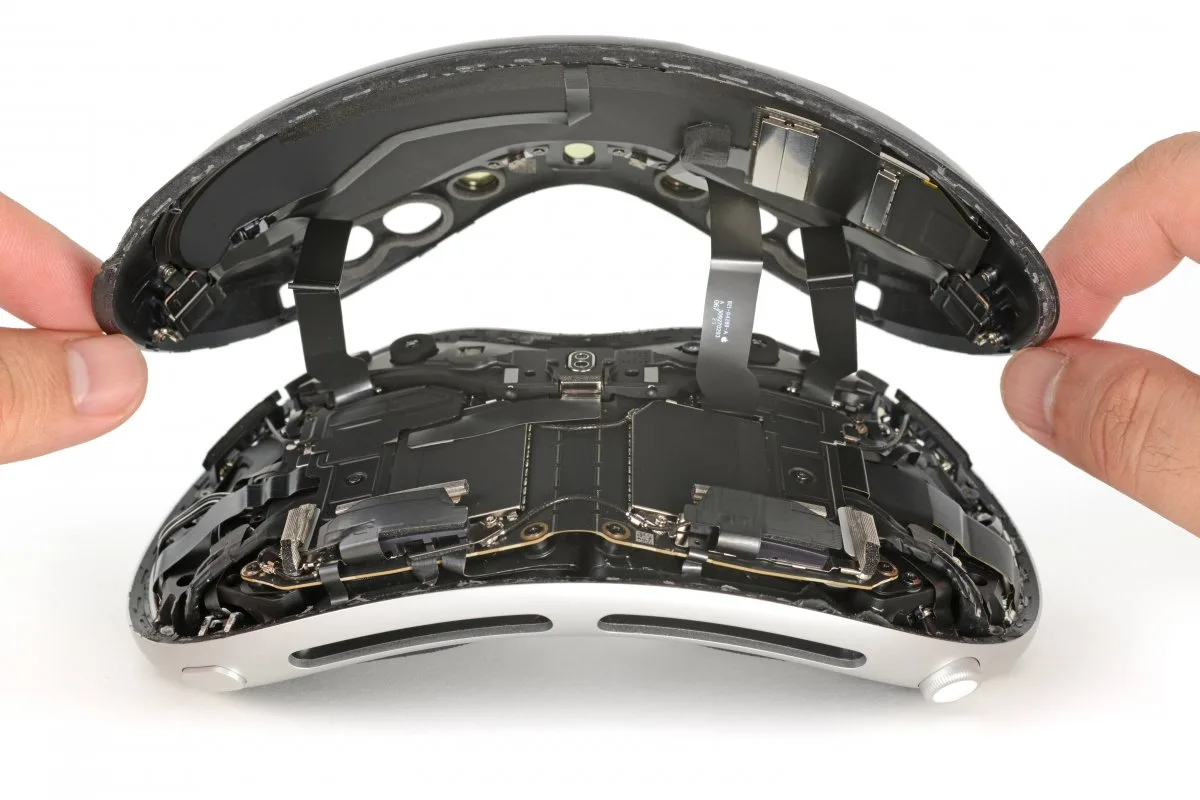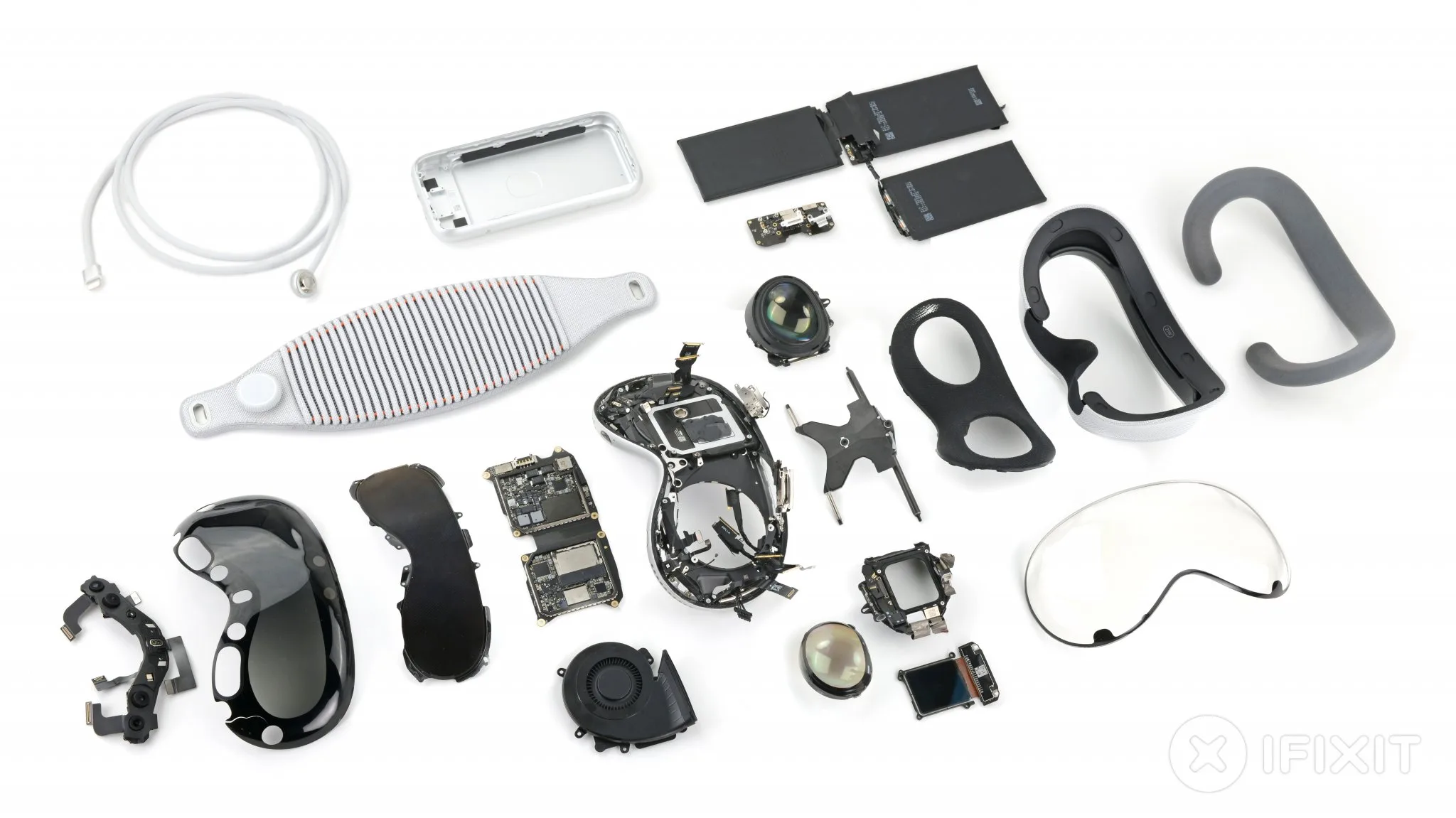Apple’s latest creation, the Vision Pro, stands out with its unique design and advanced features. iFixit’s comprehensive teardown of this device reveals a mix of innovation, complexity, and some questionable design choices. Let’s explore the intricacies of the Vision Pro in this detailed analysis.
The EyeSight Display
At the heart of the Vision Pro‘s design is the EyeSight display. This lenticular screen behind a bubble glass front displays a 3D-ish video of the user’s eyes, emulating their gaze. However, this feature has been met with mixed reviews. Described as bizarre and uncanny, its utility and repair implications raise questions. The addition of another screen and more connectors introduce potential points of failure for a feature that some may find slightly creepy.
Challenging Teardown
iFixit’s teardown of the Vision Pro was no easy task. The glass panel, glued on, required careful heating and time to remove. Inside, the device houses an array of new technology, including the EyeSight display, a sensor array, an external battery pack, and the R1 chip. Despite some damage during the teardown, iFixit provides a detailed look into the complex inner workings of the Vision Pro.

The Weight and Balance Challenge
The Vision Pro’s weight distribution presents a significant challenge. The device, over a kilogram with its external battery, rests heavily on the user’s face. Apple attempted to balance this with design choices, but the end result is still a front-heavy device that can feel uncomfortable.
Repairability
In a positive note for repairability, the Vision Pro features modular components. The speakers and headbands are easily removable, hinting at a design that could have been more repair-friendly. This modular approach, reminiscent of the AirPods Max, suggests a focus on durability for wearables.

The EyeSight Display
The front-facing EyeSight display is the most controversial feature of the Vision Pro. While it aims to create a 3D effect with its lenticular lenses, the result is a dim, low-resolution display that has been criticized for its poor visibility and odd appearance.
Lens Inserts and Stereo Displays
Apple’s attention to detail extends to the Vision Pro’s lens inserts and stereo displays, which automatically adjust for interpupillary distance. However, the need for prescription lens pairing and the lack of options for those with astigmatism highlight some user limitations.
The R1 and M2 Chips
The Vision Pro runs on an M2 Mac chip, working alongside the new R1 chip. This combination powers the device’s 12 cameras, LiDAR sensor, and TrueDepth camera, ensuring minimal latency for an optimal AR experience.
Final Thoughts
The Vision Pro is an amazingly futuristic project, showcasing Apple’s commitment to innovation. However, it comes with its share of flaws, such as the EyeSight display’s performance and the device’s overall weight. Despite these issues, the Vision Pro’s advanced technology and design choices offer a glimpse into the future of wearable computing.
iFixit’s teardown reveals both the strengths and weaknesses of the Vision Pro, providing a comprehensive look at Apple’s latest bet in the world of augmented reality. Stay tuned for further analysis and insights into this fascinating device.